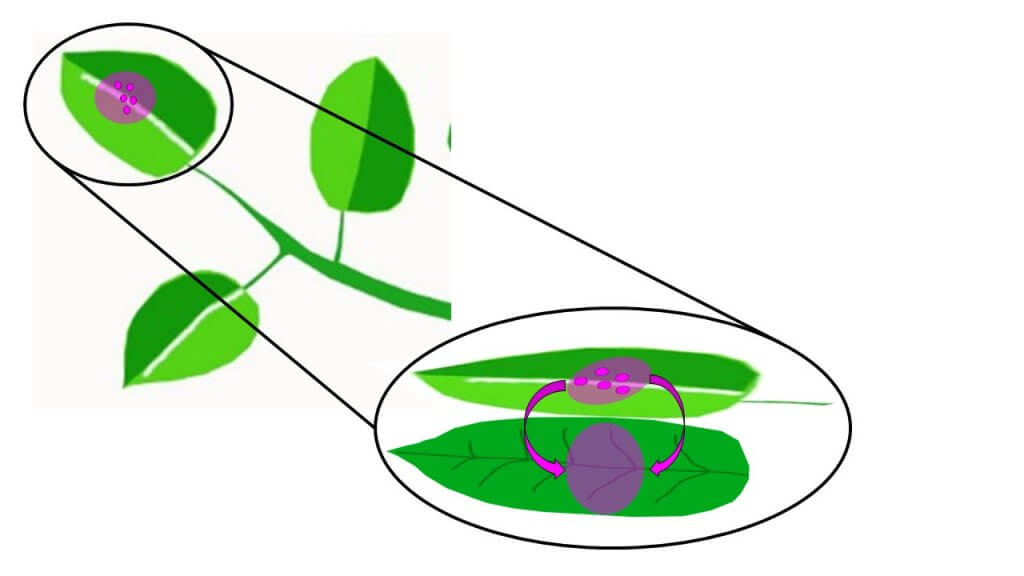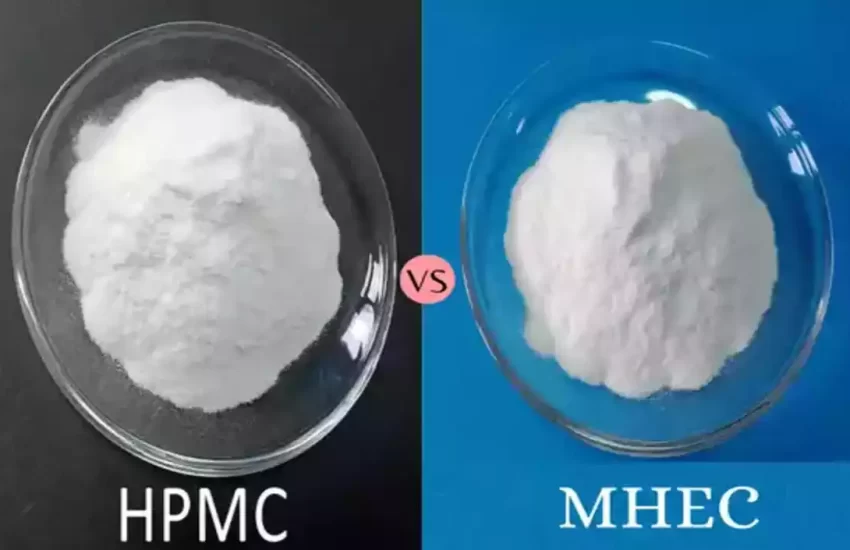Difference Between Translaminar and Systemic
Translaminar and Systemic
Translaminar and Systemic pesticides in pest control. Learn how translaminar pesticides target leaf surfaces with localized protection, while systemic pesticides distribute through plants for comprehensive coverage. Explore their pros, cons, and applications for effective integrated pest management. Make informed choices for sustainable crop protection.
Translaminar and Systemic pesticide absorption mechanisms offer different approaches for effective plant protection against insects. Translaminar methods penetrate leaf cuticles to move throughout leaf tissue for localized protection against pests on treated surfaces.
Their reduced environmental impact and lower pesticide use make them appealing, they can be vulnerable to rain wash-off and may not effectively reach pests on underside leaves.
Conversely, systemic pesticides are taken up by plants’ vascular systems (xylem and phloem), being distributed throughout their entirety including new growth. This mechanism targets pests hiding from direct application on various parts of plants as well as those hiding from direct pesticide application.
While systemic pesticides have longer-acting controls and residual effects than their direct counterparts do, they also run the risk of environmental contamination, potential harm to non-target organisms as well as development of resistance over time.
Decisions on which mechanisms to utilize will depend on several factors such as pest targets, desired protection durations, environmental concerns, and resistance management.
Integrated pest management strategies often combine translaminar and systemic approaches together with other forms of control methods for effective and long-term sustainable control in agriculture and horticulture environments.
what is Translaminar?
Translaminar refers to an effective mechanism of pesticide movement within plants, specifically through their leaf tissues. When a translaminar pesticide is applied directly onto an upper leaf surface of an ornamental plant, it has the ability to penetrate its cuticle barrier and enter its cells for distribution across both upper and lower leaf surfaces, creating what is known as the “translaminar effect.”
Translaminar pesticides provide localized protection from insects, mites, and diseases present on treated leaf surfaces. Translaminars tend to have less of an impactful impact on nontarget organisms and the environment than systemic ones.

Translaminar pesticides do have their limitations; rain or irrigation could wash it away from treated leaves and may limit their ability to control pests on the underside of leaves, since their movement occurs predominantly within treated leaves themselves.
Translaminar pesticides offer targeted leaf surface protection at an eco-friendly alternative for pest control. Their ability to remain localized reduces overall usage while protecting beneficial organisms.
To achieve comprehensive pest management, understanding both the strengths and weaknesses of translaminar pesticides as well as systemic ones as well as integrated approaches is necessary.
what is Systemic?
Systemic describes a specific mode of pesticide action characterized by uptake and distribution throughout a plant’s vascular system. When applied, systemic pesticides absorb through roots, leaves, or other parts before traveling through xylem and phloem vessels to various tissues within its target plant such as leaves, stems or even new growth.
Systemic pesticides use this mechanism to offer long-lasting control with their residual effect against insects that do not come directly into contact with the product being applied, like those feeding off plants but unknowingly coming in contact with it.

They provide greater coverage which provides longer-term pest protection against unwanted visitors to plants and helps ensure greater long-term control measures and lasting control effects.
Systemic pesticides do have drawbacks; they may pose risks to non-target organisms that feed off of treated plants and may contaminate environmental sources if leached into soil or water sources. Repeated application can lead to resistance among pest populations.
Systemic pesticides offer comprehensive pest control by disbursing protection throughout an entire plant and being effective against an array of pests, but their potential side effects on non-target organisms and the environment make responsible application.
Integration into integrated pest management practices, and developing alternative control measures are essential components to developing sustainable strategies against pest infestation.
Key Difference between Translaminar and Systemic pesticides
Here’s a more detailed comparison chart between translaminar and systemic pesticides:
| Aspect | Translaminar Pesticides | Systemic Pesticides |
|---|---|---|
| Definition | Pesticides that move within leaf tissues after penetrating the cuticle | Pesticides absorbed by plants and transported through the vascular system |
| Mode of Movement | Movement primarily within treated leaf tissue | Distribution throughout the entire plant |
| Target Pests | Effective against pests on treated leaf surfaces | Targets pests on various plant parts, including hidden areas |
| Application Coverage | Localized protection | Comprehensive protection |
| Rain/Irrigation Sensitivity | Susceptible to wash-off by rain or irrigation | Resistant to wash-off due to systemic movement |
| Duration of Protection | Generally shorter duration of protection | Longer-lasting control and residual effects |
| Non-Target Impact | Typically lower impact on non-target organisms | Potential impact on non-target organisms that feed on treated plants |
| Environmental Concerns | Reduced environmental impact due to localized effect | Risk of environmental contamination through systemic distribution |
| Resistance Development | Lesser tendency to contribute to resistance | Risk of resistance development in pests due to repeated use |
| Application Flexibility | More suitable for localized pest infestations | Effective against both localized and hidden pests |
| Sustainability Considerations | Lower overall pesticide use | Higher potential for environmental contamination |
| Integration in IPM | Often used as part of integrated pest management strategies | An integral component of integrated pest management approaches |
| Cost-Effectiveness | May require more frequent applications | Fewer applications due to longer effectiveness |
| Examples of Pesticides | Pyrethroids, neonicotinoids | Neonicotinoids, systemic fungicides |
The Pros and Cons of Translaminar and Systemic Pesticides
Translaminar Pesticides:
Pros:
- Reduced Environmental Impact: Localized action can result in lower overall impact compared to systemic ones, giving translaminar products an advantage in regard to environmental sustainability.
- Targeted Pest Control: These treatments can effectively target any pests present on treated leaf surfaces, providing effective defenses against those found on upper leaf surfaces.
- Lower Pesticide Use: Translaminar pesticides tend to require less chemical application due to their localized application method and thus reduce chemical usage overall.
- Translaminar Pesticides Have Less Non-Target Impact: As translaminar pesticides target pests on leaf surfaces only, their non-target impact may be lessened and have less of an adverse impact on beneficial insects and organisms.
Cons:
- Limited Coverage:They Are Limited Coverage Pesticides may not effectively control pests on other parts of a plant such as underside of leaves.
- Wash-Off Vulnerability: Rain or irrigation may wash off translaminar pesticides onto treated leaves, decreasing its effectiveness.
- Shorter Duration: The protection provided by translaminars tends to last shorter compared to systemic ones.
- Reapplication: Frequent reapplication may increase labor and operational costs.
Systemic Pesticides:
Pros:
- Comprehensive Protection:Systemic pesticides offer comprehensive protection by disbursing protection throughout an entire plant’s entirety – targeting hidden areas too. They target pests across various plant parts that need protection.
- Longer-Lasting Pesticide Protection: Systemic pesticides provide long-lasting control by creating residual effects, decreasing the need for frequent applications and rainproof applications.
- Rain Resistant Protection: Due to being distributed systemically, systemic pesticides are less prone to being washed off by rainwater or irrigation and become less wash-off susceptible over time.
- Systemic Pesticides Are Particularly Effective against Hidden Pests: As systemic pesticides reach all parts of a plant’s tissues, systemic solutions are particularly beneficial in combatting hidden pests that cannot easily be seen or reached with other treatments.
Cons:
- Environmental Concerns: Systemic pesticides pose an elevated risk of environmental contamination and harm to non-target organisms as their widespread distribution presents them.
- Resistance Development: With repeated usage, systemic pesticides may create pest populations resistant to their effectiveness – leading to an eventual rise of resistance among their own target pest populations.
- Higher Pesticide Usage: Due to their systemic movement, systemic pesticides often require greater application volumes – leading to higher overall use.
- Costs and Management: Longer lasting effects could incur greater expenses while mitigating resistance requires careful planning.
Which is Better for Your Crops: Translaminar or Systemic Pesticides?
Decisions between translaminar or systemic pesticides for your crops depend on various considerations, including pest species at hand, crop type, environmental considerations and your overall pest management plan. Each pesticide type comes with unique advantages and drawbacks: each has their own strengths and limitations.
Translaminar Pesticides:
- Advantages: Translaminar pesticides can be effective against surface-dwelling insects like ticks. Their localized application reduces environmental impacts while simultaneously decreasing overall usage – perfect when dealing with pests that could easily wash-off from rainwater run-off or irrigation systems.
- Limitations: Translaminar pesticides may not reach pests on the undersides of leaves as effectively, and have shorter protection than systemic products; consequently more applications might be required more frequently.
Systemic Pesticides
- Advantages: Systemic pesticides offer advantages when targeting insects feeding on various plant parts that cannot be seen directly. Their systemic movement within plants makes for longer-lasting control with wide coverage against various insects; plus they’re resistant to wash-off making them ideal for areas experiencing frequent rainfall.
- Limitations: Systemic pesticides pose greater risks to non-target organisms and environmental contamination, along with concerns for developing resistance among pest populations through repeated application.
Farmers and growers frequently employ both translaminar and systemic pesticides alongside integrated pest management (IPM) strategies in practice.
Here are a few considerations to help you select which form is ideal for your crops:
- Pest Type: For plants impacted by leaf surface pests, translaminar pesticides might provide greater protection. On the other hand, systemic sprays could offer superior security against those feeding off different parts of a plant’s body.
- Resistance Management: To limit resistance among pest populations, it’s recommended that multiple classes of pesticides including both translaminar and systemic types should be rotated regularly in an effort to keep resistance at bay.
- Environmental Impact: Consider the environmental ramifications of each pesticide type before making your decision. If reducing environmental contamination is your top priority, translaminar sprays could be better due to their localized action and reduced contamination risks.
- Crop and Growth Stage: Different crops may find more benefit from certain pesticides than others; it is wise to research which are suitable for your situation before purchasing pesticides for them.
- Rain and Irrigation: If your region experiences frequent rainfall or irrigation, systemic pesticides might provide more reliable protection from wash-off.
- Integrative Pest Management (IPM): Utilizing multiple control techniques – biological controls, cultural practices and pesticide rotation can all enhance overall effectiveness in terms of managing pests effectively.
Ending
Translaminar and systemic pesticides represent two distinct approaches to agriculture pest control. Translaminar sprays target insects on treated leaf surfaces by penetrating the cuticle layer of leaves to penetrate their tissue layers, offering localized protection with lower environmental impact and pesticide consumption.
They provide localized protection with reduced environmental impacts as well as lower overall use. Unfortunately, they may not effectively control pests on underside leaves as rain may compromise its efficacy over time.
Systemic pesticides work differently by being taken up by plants and then distributed throughout their vascular systems for coverage across numerous plant parts, even those not directly exposed.
While systemic provides comprehensive coverage with long-lasting control against wash-off, environmental contamination risks and harm to non-target organisms remain. They may even contribute to pesticide resistance development by creating resistant populations.
Decisions between translaminar and systemic pesticides will ultimately depend upon factors like pest species, crop characteristics, environmental considerations, and desired management goals.
Many farmers opt for integrated pest management strategies which combine translaminar and systemic pesticides together with various control methods in an integrated manner to achieve effective and sustainable control while simultaneously minimizing environmental impacts and resistance development. Ultimately any decision must be based on an in-depth knowledge of both the pest situation and the larger ecological context.


